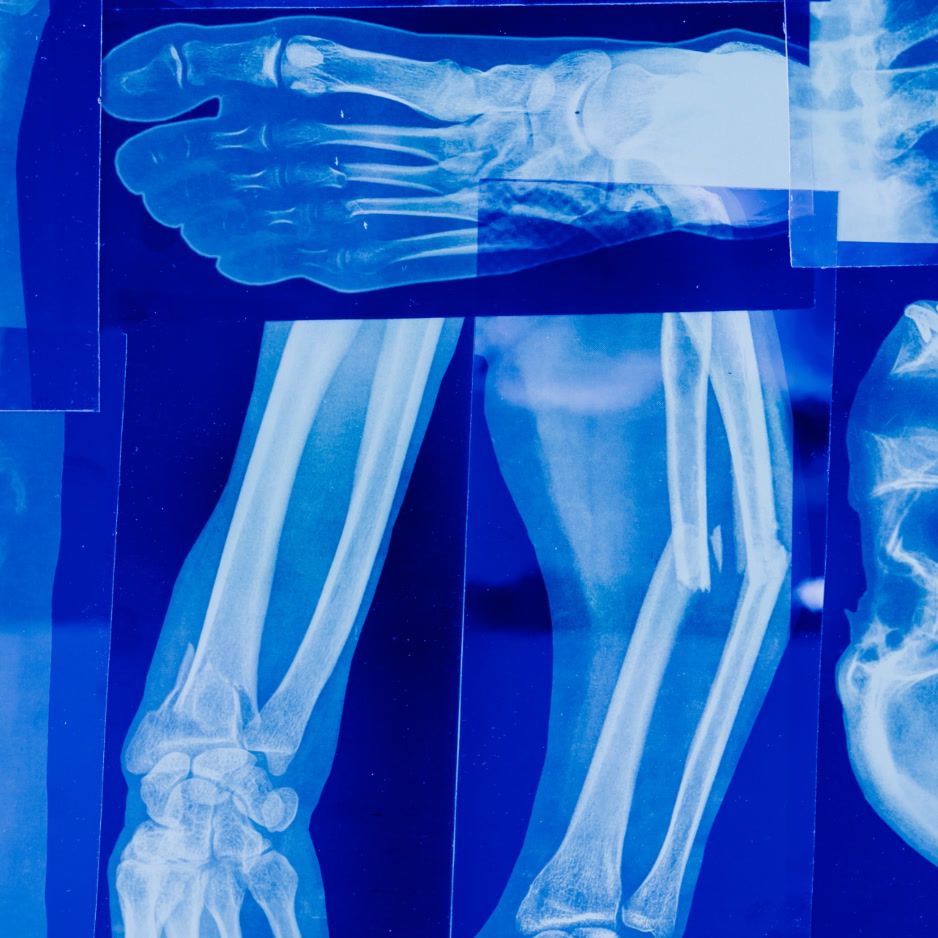How Many Miles Should You Walk a Day for Weight Loss?

How Many Miles Should You Walk a Day for Weight Loss? The Science-Backed Answer
Walking for weight loss isn't about lacing up your sneakers and hoping for the best—it's about understanding the sweet spot where miles meet metabolism. While many fitness recommendations vary widely, the research provides clear guidance on effective walking distances.
The quick answer: Most people need to walk 3-5 miles per day (equivalent to 6,000-10,000 steps) to create meaningful weight loss when combined with a sensible diet, according to CDC guidelines for weight management through physical activity. But your ideal distance depends on your current fitness level, body weight, walking pace, and weight loss goals.
Let's dive into what the science actually says about walking miles for weight loss—and how to make those miles count.
The Science of Walking Miles for Weight Loss
The Calorie-Mile Connection
Walking burns approximately 65-100 calories per mile for most adults, though this varies significantly based on individual factors, according to Verywell Fit's analysis of walking calorie expenditure. Here's how your body weight affects calorie burn at a typical walking pace:
| Body Weight | Approximate Calories Burned Per Mile |
|---|---|
| 120 lb person | ~65 calories per mile |
| 155 lb person | ~80 calories per mile |
| 180 lb person | ~100 calories per mile |
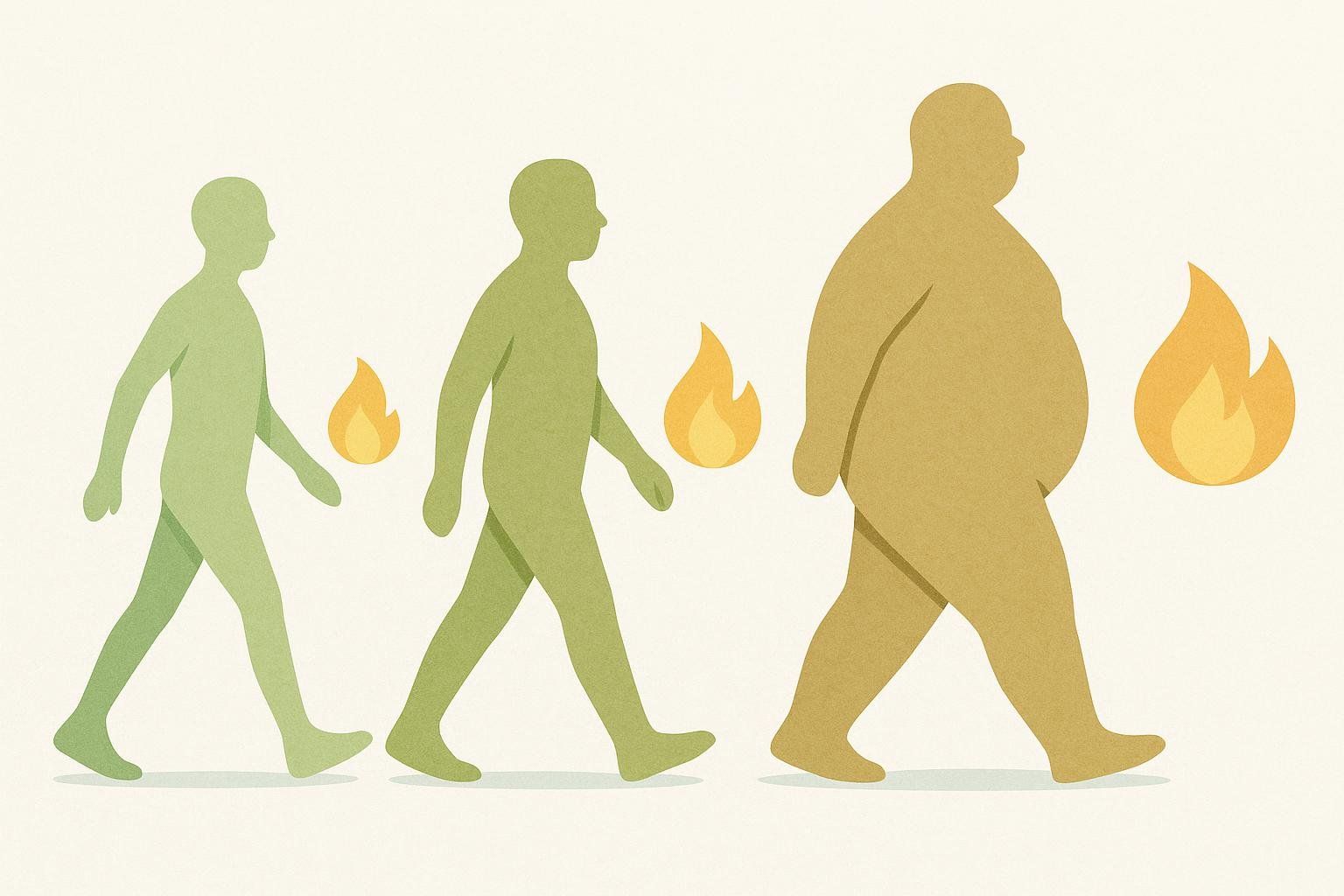
This means a 180-pound person walking 4 miles burns roughly 400 calories—enough to create a meaningful dent in the 3,500-calorie deficit needed to lose one pound.
Key Research on Walking and Metabolism
Recent research published in GeroScience (2023) confirms that faster walking pace significantly improves cardiovascular health and calorie expenditure. The comprehensive review showed that brisk walking pace was associated with a 38% and 53% reduced risk of cardiovascular disease mortality in men and women, respectively, while also demonstrating superior calorie burn compared to leisurely paces.
Meanwhile, research published in JAMA Internal Medicine tracking 16,741 older women found that mortality risk decreased significantly with each additional 1,000 steps (roughly 0.5 miles) up to about 7,500 steps per day—equivalent to approximately 3.75 miles.

For weight loss specifically, studies show that walking a mile burns nearly identical energy across different body types when adjusted for body mass, making it an accessible exercise for people of all sizes.
Frequently Asked Questions About Walking for Weight Loss
Is walking 3 miles a day enough to lose weight?
Yes, walking 3 miles daily can absolutely lead to weight loss, especially for beginners or those currently sedentary. Here's the math: A 155-pound person walking 3 miles at a moderate pace burns approximately 240 calories daily. Over a week, that's 1,680 calories—nearly half a pound of fat loss when combined with dietary changes.
However, the effectiveness depends on several factors:
- Your current weight: Heavier individuals burn more calories per mile
- Walking pace: Brisk walking can increase calorie burn by 20-40%
- Diet quality: Walking alone won't overcome a poor diet
- Current fitness level: Previously sedentary individuals will see faster initial results
For sustained weight loss, many people find they need to progress beyond 3 miles or increase intensity as their fitness improves.
How much to walk to lose 2 lbs a week?
To lose 2 pounds weekly through walking requires creating a 7,000-calorie deficit (3,500 calories per pound), which translates to a 1,000-calorie daily deficit. This is an aggressive goal that's challenging to achieve through walking alone.
The walking component: You'd need to walk approximately 10-12 miles daily to burn 1,000 calories through exercise alone (based on average calorie burn rates). This is unrealistic and potentially harmful for most people.
The realistic approach: Combine walking with dietary changes:
- Walk 4-5 miles daily (320-500 calorie burn)
- Create a 500-600 calorie deficit through diet modifications
- Total daily deficit: 1,000 calories
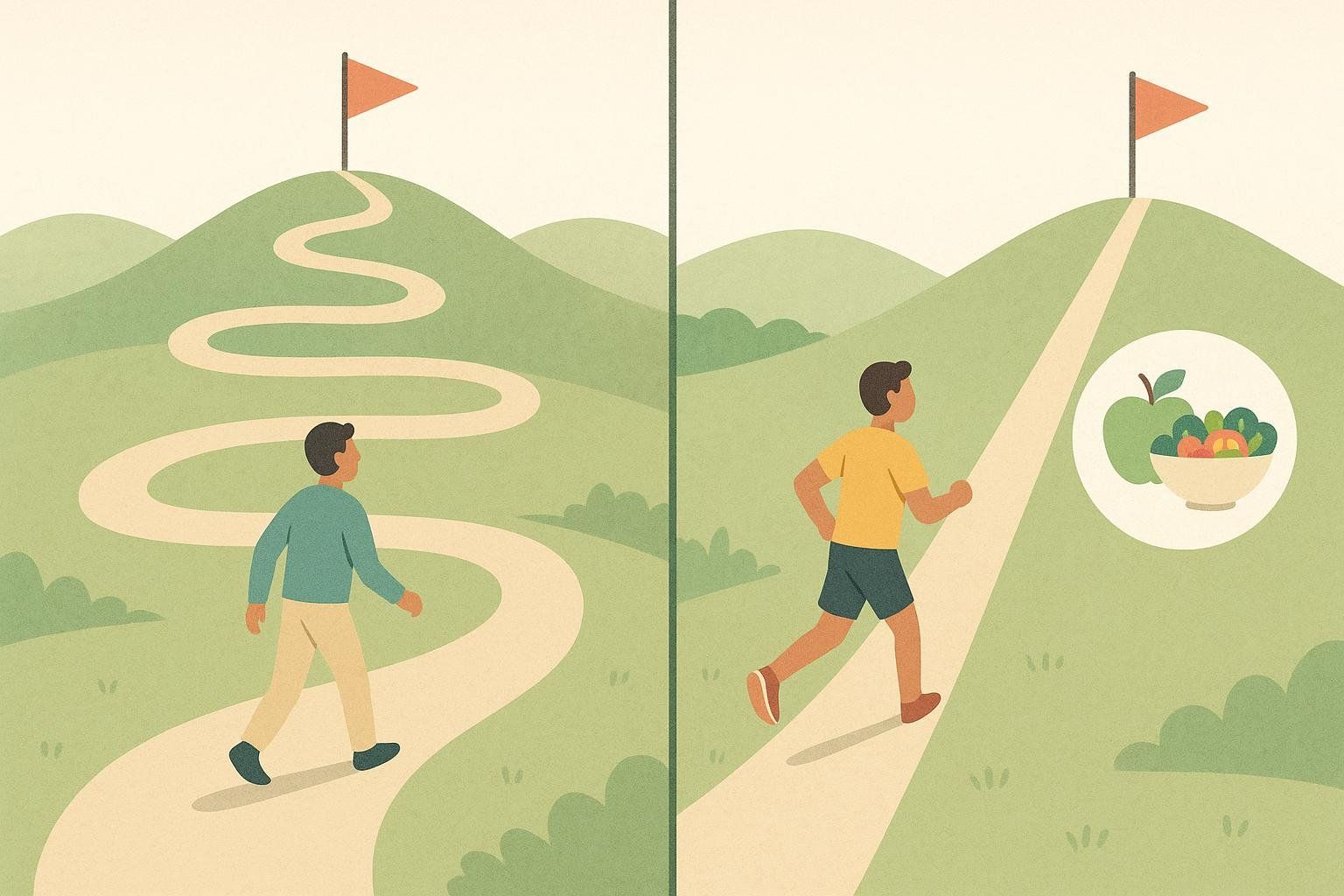
Important note: The CDC recommends 1-2 pounds per week as a safe, sustainable rate. Aiming for 2 pounds weekly should only be attempted under medical supervision and is typically appropriate for people with significant weight to lose.
How many miles should I walk a day trying to lose weight?
The optimal daily walking distance for weight loss depends on your starting point and goals:
For sustainable weight loss (1-2 lbs per week):
- Beginners: Start with 2-3 miles daily, building to 4-5 miles
- Intermediate: 4-6 miles daily with varied intensities
- Advanced: 5-7 miles daily with hills, intervals, or additional resistance
Factors that influence your ideal distance:
- Current fitness level: Sedentary individuals should start conservatively
- Body weight: Heavier people burn more calories per mile
- Available time: Consistency matters more than distance
- Joint health: Those with arthritis or injuries may need shorter, more frequent walks
The progression principle: Start with a distance you can maintain 5-6 days weekly, then increase by 0.5-1 mile every 1-2 weeks until you reach your target.
Can I lose belly fat by walking?
Yes, walking can help reduce belly fat, but it's important to understand how this process works. Walking doesn't "spot-reduce" fat from your belly specifically, but it effectively targets visceral fat—the dangerous fat that accumulates around your organs.
Why walking works for belly fat:
- Visceral fat response: Research demonstrates that moderate aerobic exercise like walking preferentially reduces visceral adipose tissue
- Stress reduction: Walking lowers cortisol levels, which helps reduce stress-related belly fat accumulation
- Improved insulin sensitivity: Regular walking helps your body process blood sugar more effectively, reducing fat storage
To maximize belly fat loss through walking:
- Maintain consistency: Walk 5-6 days per week minimum
- Include intensity: Add brisk intervals or hill walking 2-3 times weekly
- Combine with strength training: Resistance exercises help preserve muscle mass during weight loss
- Monitor your diet: You cannot out-walk a poor diet—belly fat loss requires overall calorie management
Realistic timeline: With consistent walking and proper nutrition, most people see noticeable reductions in waist circumference within 8-12 weeks, with DEXA scans providing the most accurate measure of visceral fat changes.
How to Determine Your Personalized Walking Distance
Based on your current activity level, establish your starting daily walking target:
| Current Activity Level | Daily Steps Range | Equivalent Miles | Initial Goal Distance |
|---|---|---|---|
| Sedentary | Under 5,000 steps | Under 2.5 miles | Work towards 3 miles daily |
| Lightly Active | 5,000-7,500 steps | 2.5-3.75 miles | Build up to 4 miles daily |
| Moderately Active | 7,500-10,000 steps | 3.75-5 miles | Progress to 5 miles daily |
| Very Active | 10,000+ steps | 5+ miles | 6+ miles for weight loss |
Start with the recommended distance for your activity level. As you get comfortable, aim to increase your distance by about half a mile every one to two weeks to continue challenging your body and drive further results. Remember to factor in your individual circumstances—heavier individuals burn more calories per mile and may achieve goals with slightly fewer miles, while lighter individuals may need to walk farther or add intensity to create the same caloric deficit.
5-Week Progressive Walking Plans

The Beginner's Blueprint: "Couch to Confident"
Week 1-2: Finding Your Rhythm
- Distance: 1-1.5 miles
- Frequency: 4 days
- Pace: Comfortable conversational pace (you can talk easily)
- Duration: 20-30 minutes (approximately 3-3.5 mph)
Week 3-4: Building Consistency
- Distance: 2-2.5 miles
- Frequency: 5 days
- Pace: Comfortable, with 3 minutes of brisk walking every 10 minutes
- Duration: 35-45 minutes
Week 5: Establishing Your Foundation
- Distance: 3 miles
- Frequency: 5-6 days
- Pace: Alternate 4 minutes of comfortable pace with 1 minute of brisk walking
- Duration: 45-60 minutes
The Intermediate Accelerator: "Building Momentum"
Week 1-2: Setting the Pace
- Distance: 3-3.5 miles
- Frequency: 5 days
- Pace: Brisk throughout (breathing harder but can still talk in short phrases)
- Duration: 45-55 minutes
Week 3-4: Increasing Intensity
- Distance: 4-4.5 miles
- Frequency: 6 days
- Pace: Alternate 6 minutes brisk with 2 minutes of power-walking
- Duration: 50-60 minutes
Week 5: Maximizing Efficiency
- Distance: 4-5 miles
- Frequency: 6 days
- Pace: 10 minutes comfortable, 10 minutes brisk, 5 minutes power-walking, repeat
- Duration: 55-65 minutes
The Advanced Challenge: "Maximum Impact"
For experienced walkers ready to maximize fat loss:
Week 1-2: Intensity Integration
- Distance: 4-5 miles
- Frequency: 6 days
- Pace: Include 4-5 one-minute vigorous intervals with 3-minute recovery walks
- Duration: 50-60 minutes
- Add: Hill walking or incline treadmill sessions
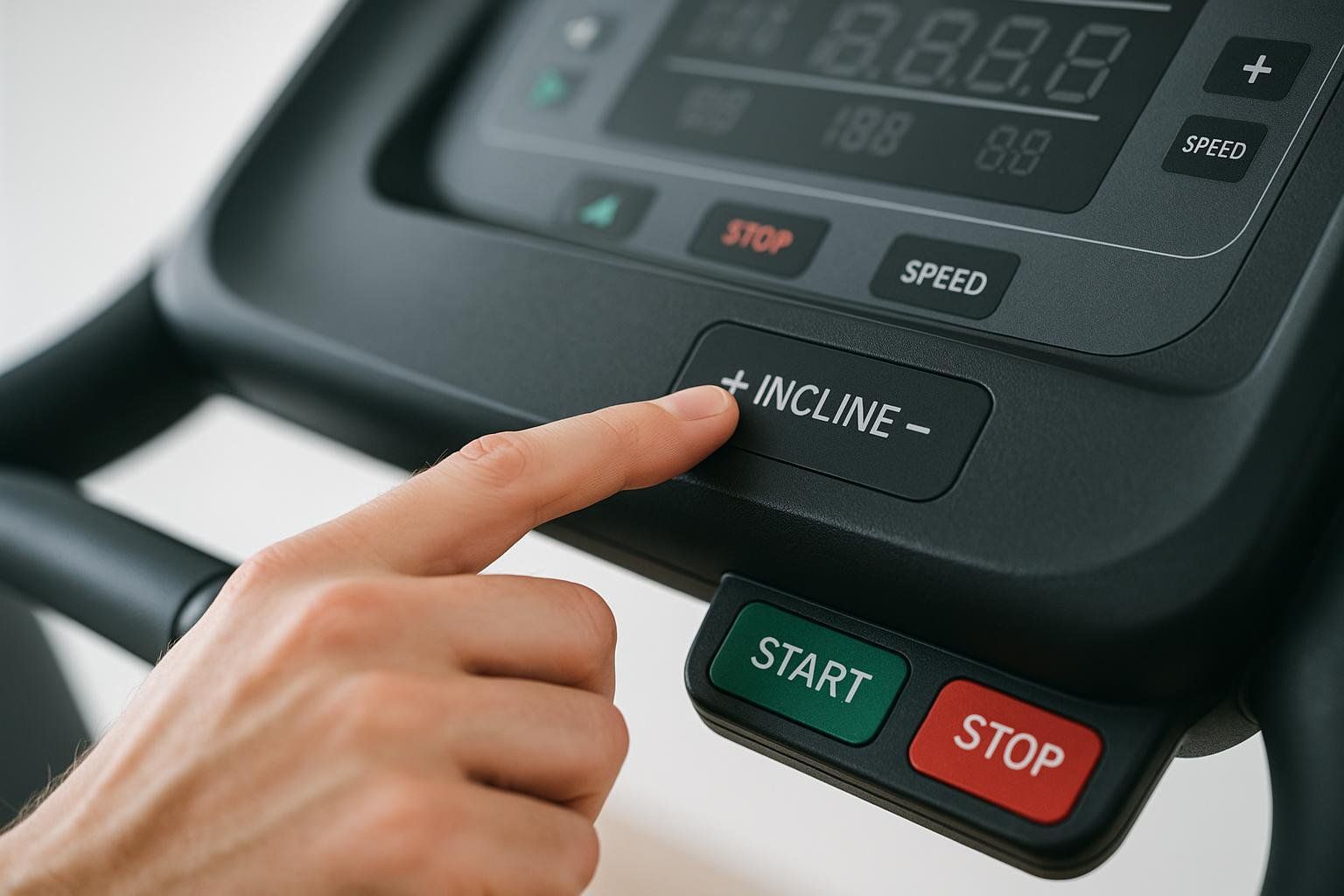
Week 3-4: Power Development
- Distance: 5-6 miles
- Frequency: 6-7 days
- Pace: Daily rotation: easy recovery, moderate steady, brisk intervals, power hills
- Duration: 55-65 minutes
- Add: Weighted vest (5-10 lbs) twice weekly
Week 5: Peak Performance Protocol
- Distance: 5-6 miles
- Frequency: 5-6 days (with one longer 7-8 mile walk weekly)
- Pace: Pyramid intervals: 1-2-3-2-1 minute efforts with equal recovery
- Duration: 50-60 minutes (plus one 70-80 minute long walk)
- Add: Incorporate one timed 1-mile effort weekly to track speed improvements
Beyond Miles: Intensity and Terrain Matter
The Power of Pace
Faster walking speeds are more effective for weight loss because they burn significantly more total calories in the same amount of time. While the proportion of fat-burning varies by pace, the total calorie burn—and therefore weight loss potential—increases substantially with speed.
Research on metabolic equivalents demonstrates that walking speed dramatically affects total energy expenditure. While slower walking uses a higher percentage of fat for fuel, faster walking burns more total calories overall. The percentage difference is notable: leisurely walking burns about 68% fat versus 45% for brisk walking. However, the total calorie burn is what matters most for weight loss. Since weight loss depends on creating a calorie deficit, the higher absolute calorie burn from faster walking makes it more effective for achieving this goal.
The sweet spot for weight loss: Alternating between moderate and brisk paces maximizes both fat burning and total energy expenditure.
Terrain Transforms Results
Hill Walking Benefits:
- Can significantly increase calorie burn compared to flat terrain
- Activates more muscle groups, particularly glutes and hamstrings
- Builds strength while maintaining the low-impact nature of walking
Incline Recommendations:
- Beginners: 2-5% grade
- Intermediate: 5-10% grade
- Advanced: 10-15% grade
Sand and Trail Walking:
- Burns substantially more calories than walking on pavement because of the added resistance
- Improves balance and engages stabilizing muscles
- Provides mental health benefits through nature exposure
Real Results: What to Expect and When
While individual results vary, here is a realistic timeline of what you might expect from a consistent walking program, based on established principles and real-world outcomes:
Week 1-2: The Foundation Phase
- Weight change: Minimal; some initial fluctuation is common
- Body composition: No significant changes yet
- Other benefits: Improved sleep quality, increased energy, better mood
- What to track: Consistency, distance covered, how you feel
Week 4-6: Early Adaptations
- Weight change: 2-4 lbs of fat loss (with dietary changes)
- Body composition: Slight reduction in body fat percentage
- Other benefits: Lower resting heart rate, improved endurance
- What to track: Measurements, how clothes fit, walking pace improvements
Week 8-12: Visible Changes
- Weight change: 6-12 lbs of fat loss (with continued dietary management)
- Body composition: Noticeable reduction in body fat and visceral fat
- Other benefits: Significant cardiovascular improvements, muscle definition in legs
- What to track: Body measurements, progress photos, performance metrics
Month 6+: Long-term Success
- Weight change: Sustained weight loss with improved maintenance
- Body composition: Substantial improvements in body fat distribution
- Other benefits: Maintained muscle mass, improved bone density, enhanced metabolic health
Tracking Your True Progress
The bathroom scale tells only part of the story. Here's why walking for weight loss requires more sophisticated tracking:
Why the Scale Lies
When you start a walking program, several things happen simultaneously:
- You lose fat tissue
- You may gain lean muscle mass, especially in your legs
- You retain more water for muscle recovery
- Your bone density may improve from weight-bearing exercise
This means the scale might barely budge even as your body composition dramatically improves.
The DEXA Advantage for Walkers
A DEXA scan (Dual-Energy X-ray Absorptiometry) provides the precision walking enthusiasts need:
Visceral Fat Tracking: Walking specifically targets dangerous belly fat, and DEXA shows exactly how much you've lost.
Muscle Preservation: Ensures your weight loss comes from fat, not precious muscle tissue.
Bone Health Monitoring: Walking is weight-bearing exercise that strengthens bones—DEXA tracks these improvements.
Regional Analysis: See how walking reshapes your body, from slimmer legs to a trimmer waist.
Walking-Specific Metrics to Monitor
Performance Indicators:
- Walking pace at conversational effort
- Distance covered without fatigue
- Heart rate recovery after brisk intervals
- Ability to walk hills without stopping
Body Composition Changes:
- Body fat percentage (target: 1-2% reduction monthly)
- Visceral fat mass (aim for 5-10% reduction in 3 months)
- Leg muscle mass (should maintain or slightly increase)
- Waist-to-hip ratio improvement
Metabolic Improvements:
- Resting heart rate decrease
- Blood pressure improvements
- Blood sugar stability
- Sleep quality enhancement
Maximizing Your Walks: Pro Tips
Morning Mile Strategies
- Walking before breakfast may encourage your body to use fat for fuel
- Choose routes with gentle morning sunlight exposure
- Use this time for meditation or podcasts
- Keep a consistent wake-up time to build the habit
Lunchtime Power Sessions
- Break longer distances into two sessions if needed
- Walk briskly for 20-30 minutes to boost afternoon energy
- Use stairs or hills to add intensity in short timeframes
- Pack comfortable walking shoes at your office
Evening Wind-Down Walks
- Keep pace moderate to avoid disrupting sleep
- Use this time to decompress from the day
- Walk with family or friends for social connection
- Choose well-lit, safe routes for consistency
Weather-Proof Your Routine
- Rain days: Mall walking, covered parking garages, treadmill
- Hot weather: Early morning or late evening walks, shaded trails
- Cold weather: Layer appropriately, focus on well-maintained paths
- High pollution days: Indoor alternatives or countryside routes
Common Walking Mistakes That Sabotage Weight Loss
The Compensation Trap
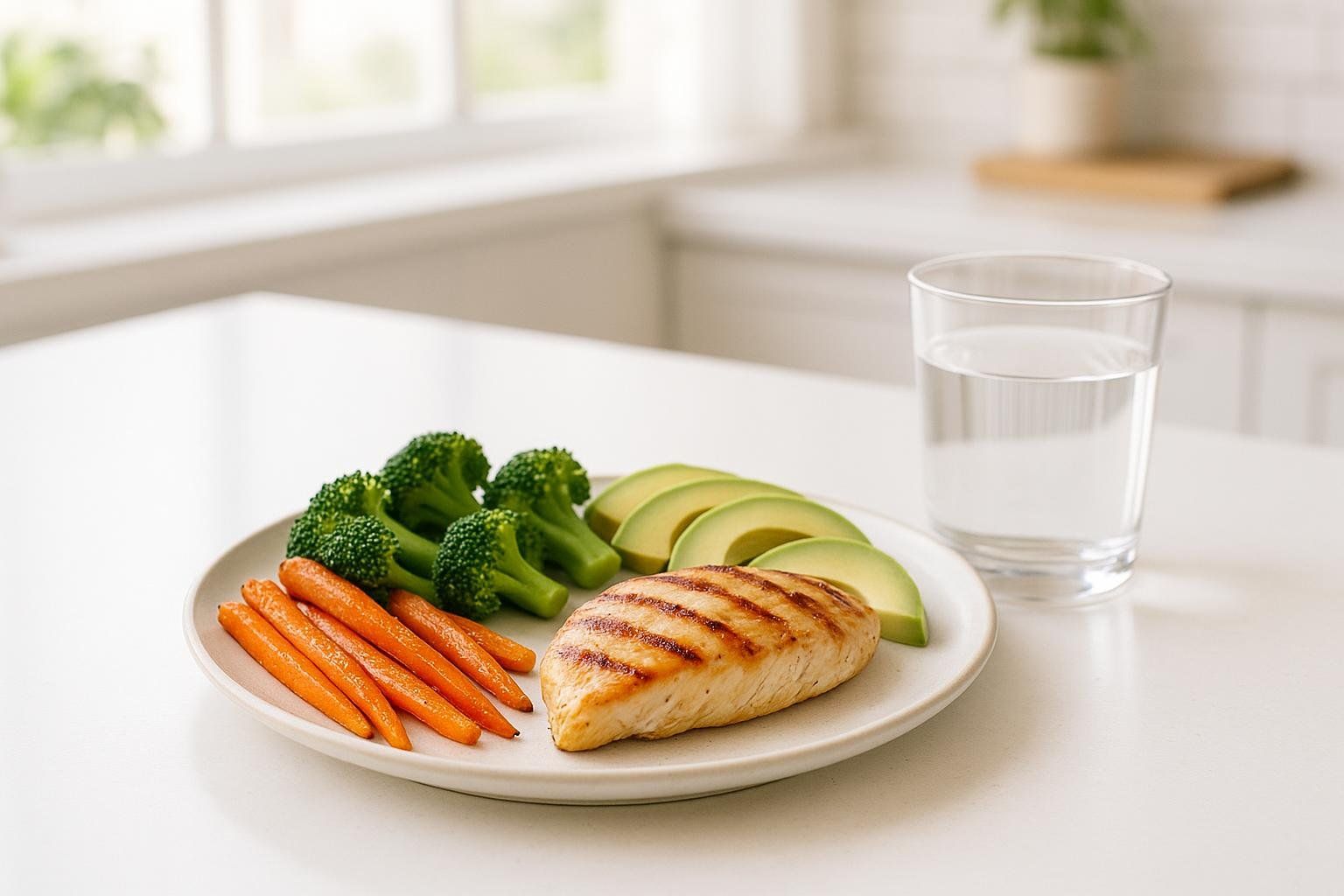
Many people unconsciously eat more after starting a walking routine, negating their calorie deficit. A systematic review examining exercise impacts on energy intake found that while exercise training may create small compensatory increases in hunger, the effect on total daily energy intake varies significantly among individuals.
Solution: Track your food intake for the first few weeks and avoid rewarding walks with high-calorie treats. Consider getting a resting metabolic rate test to understand your true daily calorie needs.
The Plateau Pace
Walking the same route at the same pace every day leads to adaptation—your body becomes efficient and burns fewer calories over time.
Solution: Vary your route, pace, and terrain weekly. Add hills, intervals, or longer distances regularly.
The Weekend Warrior Error
Cramming your weekly miles into two long weekend walks increases injury risk and may provide less consistency than regular activity. Research on physical activity patterns shows that both weekend warriors and regularly active individuals gain significant health benefits compared to inactive people, but consistent daily activity helps establish better long-term habits.
Solution: Aim for at least 5 days of walking weekly, even if some sessions are shorter.
The Bottom Line: Your Walking Prescription
For sustainable, research-backed weight loss through walking:
Start Here: 3-4 miles daily for most people, adjusted based on your current fitness level
Progress Gradually: Add 0.5-1 mile per week until you reach your target distance
Mix Intensities: Combine leisurely, moderate, and brisk paces throughout your week
Add Terrain: Include hills, trails, or incline treadmill sessions 2-3 times weekly
Track Precisely: Use DEXA scans to monitor true fat loss vs. muscle preservation
Be Patient: Give your walking program 8-12 weeks to show significant body composition changes
Remember that walking is a highly flexible and beneficial form of exercise. The key is to start where you are and apply these principles to optimize your results. Trust the process.
Ready to see exactly how your walking miles are reshaping your body? Book your BodySpec DEXA scan and get precision data that your bathroom scale simply can't provide.
The road to sustainable weight loss really can start with a single step—and now you know exactly how many steps (and miles) to take.
